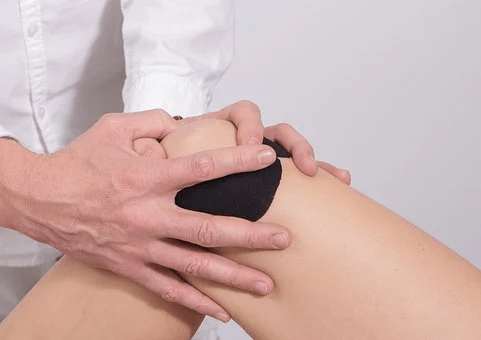Persons with type 2 diabetes (T2D) who are treated with metformin may be at significantly reduced risk for total joint replacement (hip, knee) according to research from China published online January 19, 2023, in the Canadian Medical Association Journal.
The population-based matched cohort study of more than 40 000 participants found the risk of total knee replacement (TKR) or total hip replacement (THR) was reduced by 30% in participants who received metformin compared to those who did not.
Total joint replacement is often required in older adults with osteoarthritis (OA) primarily because there are no treatments available to prevent or reverse the chronic progressive joint disease, the authors write. They point to trends in the US where the demand for both TKR and THR is expected to reach 3.5 million by 2030 when a projected 572 000 surgeries will be required annually.
The investigators, led by Changhai Ding, MD, PhD, professor and director, Clinical Research and Orthopedic Centres, Zhujiang Hospital at Southern Medical University, Guangzhou, China, also point out that OA is common in those with T2D. In fact, T2D is a known OA risk factor, independent of body mass index and there is evidence that insulin resistance may hasten the development of OA. Interestingly, metformin, in addition to being the first line antihyperglycemic agent for T2D around the world, also has been associated with reducing risk of cardiovascular and inflammatory disease and shown to have chondroprotective effects. The authors cite evidence that intra-articular metformin administered shortly after joint injury has delayed OA development in animal models, as well.
In the US…the demand for both TKR and THR is expected to reach 3.5 million by 2030 when a projected 572 000 surgeries will be required annually.
Despite some evidence of a T2D-OA association, however, Ding et al say that, overall, studies looking at the potential correlation are “uncommon and inconclusive.”
To add to and help clarify existing findings, Ding et al tapped the Taiwan National Health Insurance Research Database, selecting adults aged ≥45 years who were diagnosed with T2D between 2000 and 2012. The investigators then identified those treated with metformin, defining a metformin user as anyone who had initiated the drug within 180 days before or after a diagnosis of T2D. Researchers matched metformin users by age, sex, and time of diagnosis with nonusers in the database. They conducted separate analyses using prescription time-distribution matching (PTDM) and propensity-score matching (PSM) to balance potential confounding variables.
The primary outcomes were TKR or THR after the index date (3 months after the first metformin prescription). The authors point out that because all cases were peer-reviewed before reimbursement was approved, the accuracy of the data on TKR and THR was high.
FINDINGS
The final study cohort numbered 40 694 participants with 20 347 each in the metformin user and nonuser groups. Mean age was 63 years 49.8% were women. A total of 837 patients underwent TKR and 148 underwent THR in the PTDM cohorts and an average of 90% of replacements were related to OA (97.5% for TKR, 50.7% for THR).
When Ding and colleagues compared participants who did not use metformin with those who did, use of metformin was associated with a lower cumulative incidence probability of TKR, THR or either joint replacement. The TKR incidence in the PTDM cohort was 2.96 vs 4.15 per 10 000 person-months for metformin users and nonusers respectively (adjusted hazard ratio [aHR] 0.71, 95% CI 0.61-0.84). For THR in this cohort incidence was 0.44 vs 0.83 per 10 000 person-months for users and nonusers respectively, with an adjusted HR of 0.61 (95% CI 0.41-0.92).
In the PSM cohort, when researchers compared metformin users with those who did not use the drug, the crude HR of total joint replacement was 0.73 (95% CI 0.61–0.87), and the adjusted HR was 0.75 (95% CI 0.62–0.89). They report a significant reduction in risk for TKR in metformin users compared to nonusers (aHR 0.76, 95% CI 0.62-0.92) and a similar but not significant reduction for THR (aHR 0.71, 95% CI 0.44-1.13) in the PMS cohort. Propensity-score matching analyses (10 163 participants not treated with metformin v. 10 163 treated with metformin) and sensitivity analyses using inverse probability of treatment weighting and competing risk regression showed similar results.
Diabetes and metabolic syndrome have both been linked to OA in the past, the investigators write. They point out also that although the biological mechanisms linking metformin with protection against OA remain unclear, the reduction in need for total joint replacement in T2D patients may be explained by metformin’s anti-inflammatory properties, its ability to sustain adenosine 5′-monophosphate–activated protein kinase activity in chondrocytes and to regulate metabolism.
“Given our findings and those of a previous observational study, a randomized trial of the efficacy of metformin in patients with OA is indicated. Metformin has been studied in patients without diabetes mellitus and was found to be safe,” they conclude.
Reference: Zhu Z, Huang J-Y, Ruan G, et al. Metformin use and associated risk of total joint replacement in patients with type 2 diabetes: a population-based matched cohort study. CMAJ. 2022;194:E1672-84. doi:10.1503/cmaj.220952




